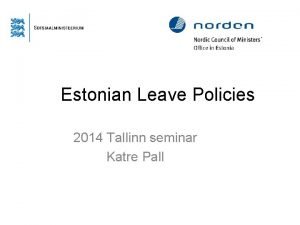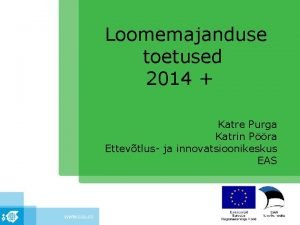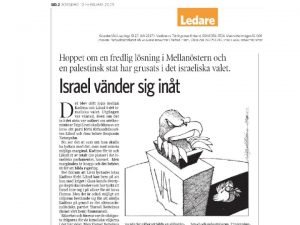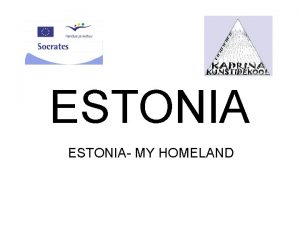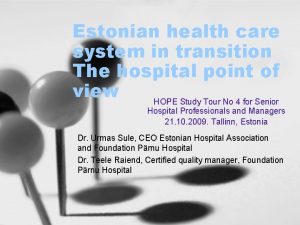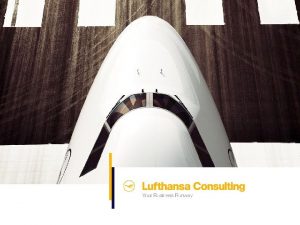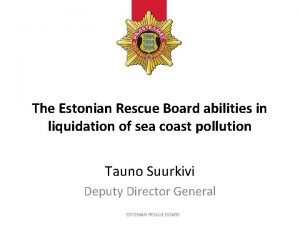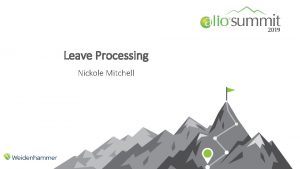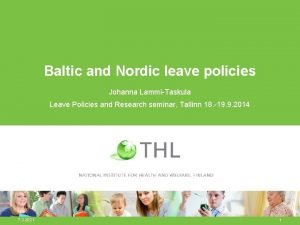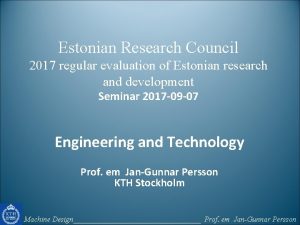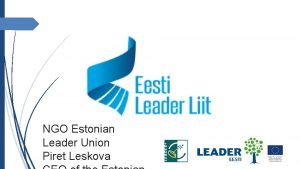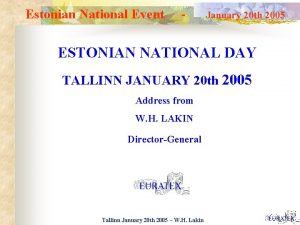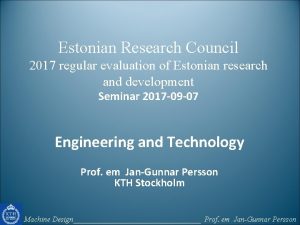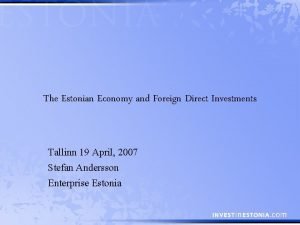Estonian Leave Policies 2014 Tallinn seminar Katre Pall













- Slides: 13

Estonian Leave Policies 2014 Tallinn seminar Katre Pall

Historic overview • Right to maternity leave 1913 • Fully paid 10 week leave for civil servants 1920

Soviet Estonia – full female employment • 1946: 11 weeks of paid maternity leave • 1959: + 6 months of unpaid leave • 1982: 1 year leave compensated at minimum wage level • 1989: paid leave 18 months, unpaid leave up to 3 years Entitlements for women only

Second Estonian Republic since 1991 • Maternity leave + 2 weeks • Childcare leave 3 years paid throughout • 2 weeks unpaid leave for parents of children under 14 • Childcare leave available for fathers • 2 week paternity leave flat rate payment Decrease of birth rates from 2. 2 to 1. 3 (19902002)

New paradigm: Swedish model • 2004 fully paid parental benefit for 225 days • Maternity + parental benefit = 1 year of fully paid leave • Right to 3 year childcare leave maintained • 2006: + 90 days of full payment • 2008: + 120 days of full payment

Current leave scheme • 140 days of maternity leave 100% + 435 days of parental benefit 100% = 575 days / 19 months fully paid leave • Childcare leave until the child reaches 3 years; flat rate benefit • Speed premium if children born within 2 and half years

Entitlements • Maternity leave – employment contract; self employment • Parental leave – employment contract • Parental benefit - everyone is entiteled • Calculation based on average earnings of a previous calendar year; • Base rate for those who have not worked

Father and Son • Paternity leave 10 working days • Benefit depends on economic situation • Restrictions to parental benefit were abolished in 2007

Flexibility • Parents can switch benefit recipient every month • Working and receiving benefit on reduced amount is possible • Working for another employer during leave allowed • Parents cannot take leave simultaneously (part-time work is rare, especially for men)

Impacts • Men’s share among benefit receivers is 6% • Around 8 % of benefit recipients have income from work • Speed premium effect – more children are born within 1. 5 – 2. 5 years • Children under 3 years are least affected by poverty

Impact analyses Policy impacts are monitored regularly (2006; 2009; third study being planned for 2015) • Share of parents employed before birth of a child has grown • Scheme has impact on employed women giving birth to third, second also first child • Share and number of women with higher education, higher income and in employment giving birth has grown

Current policy debates • Child poverty • Childcare availability for children under 3 yrs. • How to make working during leave more appealing • Not much interest by politicians in father’s quota • No debates around 3 year childcare leave • Employer’s role – no issue

Thank You For more information: Katre Pall katre. pall@sm. ee Marre Karu marre. karu@praxis. ee
 Katre pall
Katre pall Katre purga
Katre purga Stoppad pall som gett namn åt statsrådsämbete
Stoppad pall som gett namn åt statsrådsämbete Pall corporation portsmouth
Pall corporation portsmouth Võrkpalli ülaltsööt
Võrkpalli ülaltsööt Robert orloff
Robert orloff Estonian national bird
Estonian national bird Estonian healthcare system
Estonian healthcare system Pitaras russian
Pitaras russian Estonian aviation academy
Estonian aviation academy Estonian real estate market
Estonian real estate market Traditional estonian kitchen
Traditional estonian kitchen Estonian rescue board
Estonian rescue board Estonian national defence college
Estonian national defence college
